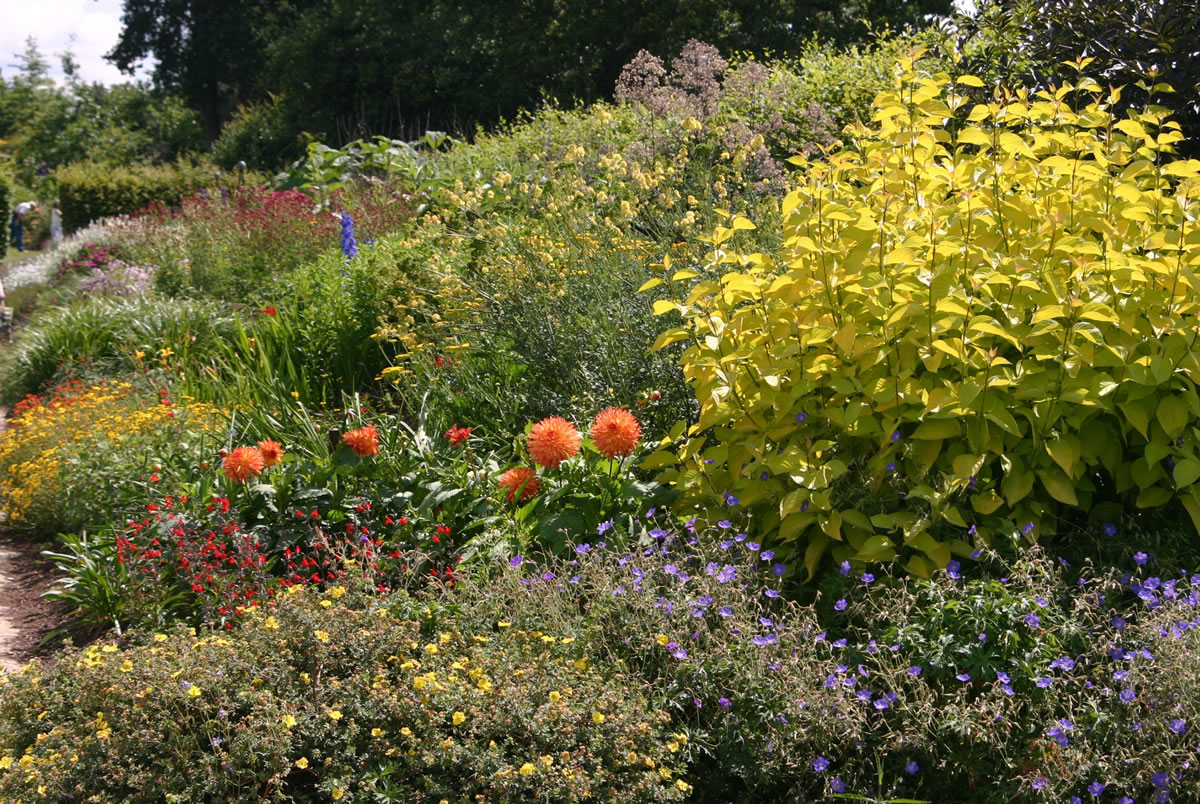The main reason we prune roses is to encourage the shrub to make more flowers. Roses, like every other plant in the garden, are here to reproduce. Once any plant flowers, its next purpose is to set seed. When you cut a flower head off before the flower goes to seed, as you do when you prune a rose, the plant produces another flower in an effort to propagate. Prune regularly throughout the season and you will keep flowers coming and vases filled to the brim.
Most bulbs flower only once and then set seed. Certain perennial plants, such as oriental poppies and bleeding heart, have one flush of flower production each year. After flowering, the plant itself dies down and becomes dormant. They look best if cut back to within a few inches of the ground. Plant summer maturing perennials nearby to fill the gap. Many of the best garden plants will bloom for a longer season
if flower heads are cut off. Moonbeam coreopsis and the pin cushion flower Scabiosa “Blue Perfection” will rebloom all summer if deadheaded on a regular basis.
All plants look better through the summer season if you take the time to cut back spent, tattered foliage. Many will benefit if you cut all foliage back to within a few inches of the ground. The majority of early flowering perennials such as pulmonarias and hellebores will not produce any more flowers but they will grow new, fresh leaves that improve the overall appearance of the garden. Cut snail-riddled leaves on shade-loving hostas down to the ground. These hardy perennials will reward you with glorious, unblemished new foliage.
If you find yourself in a job that has you in one place for a long time, trimming a long hedge or weeding a large border, try listening to a book on tape. I am going to listen to the Harry Potter books by J.K. Rowling for the second time. I remember the last time I listened to “The Sorcerer’s Stone.” I caught myself laughing out loud as I worked alone in the garden. Not only will you find yourself smiling while working, you’ll have something halfway interesting to talk about the next time you speak with a 12 year old.
Time to fertilize
While some decorative garden shrubs are just beginning their flower growth cycle, many rhododendrons have already finished flowering. Deadhead the spent flower heads from the shrub. The new shoots, which will produce blossoms next year, start to develop just behind the old flower trusses.
Take a few minutes to look closely at a branch and make the designation between flower bud, new leaf and next year’s buds. Once you have the structure clearly in your mind, you can move quickly through the shrub, snapping off the sticky, spent blooms. This is one of those tedious garden chores that pay off in the coming year.
For those of us who enjoy the act of watering, it’s time to apply a liquid fertilizer with a hose end sprayer every couple of weeks to pots and planters. Your plants need nutrients to develop new stems, leaves and flower buds during the coming months. Organic fertilizers are generally derived from animal or plant remains such as hoof and horn, blood, bone meal, and fish and seaweed meal. Inorganic fertilizers provide plant nutrients in concentrated form but do not improve soil texture.
Completion of bloom is the signal to feed rhododendron, camellia, pieris and other broad-leaf evergreens. Make a sweep of the garden, fertilizing all acid-lovers at the same time. A healthy plant will have a substantial root zone that stretches out as far as the branches stretch above ground. This is called the drip line and is a good reference point of how far away from the base of a plant to fertilize.
If you are interested in using herbs and vegetables in your mixed-flower borders, consider plants that can hold their own with colorful perennials. There’s no denying the impact of the decorative stems of the Swiss chard “Bright Lights.” They come in a variety of vibrant colors — yellow, orange, red and white — and the plants continue all season if you harvest regularly. A tall patch of bronze fennel with its delicate, smoky cloud of licorice-scented flowers makes a great backdrop for white cosmos. When summer annuals fade, plant the crinkly leaved ornamental kale, a cold season crop, as a decorative planter accent to carry your potted plants into winter.
Robb Rosser is a WSU-certified master gardener. Reach him at Write2Robb@aol.com.



